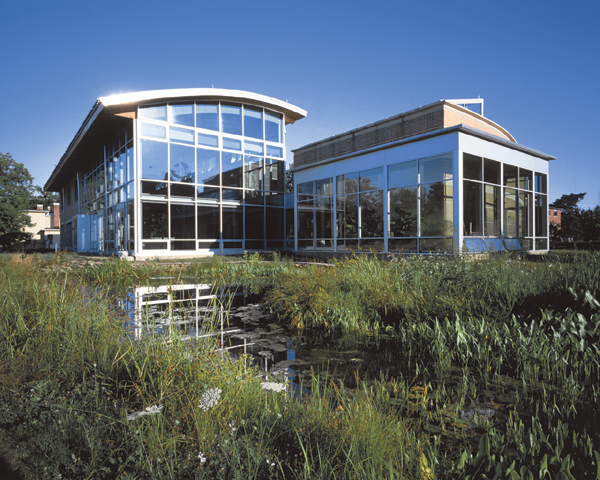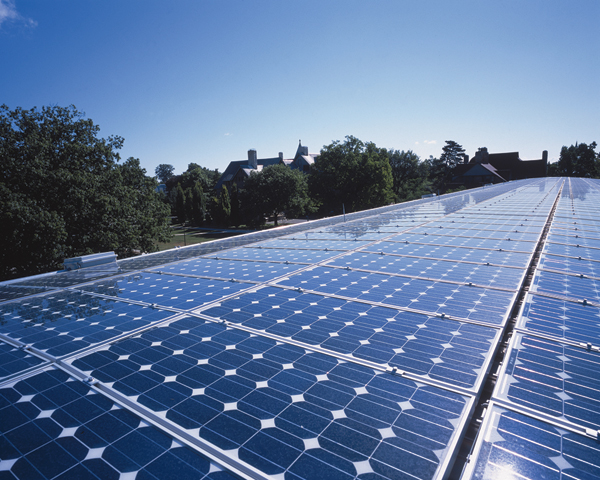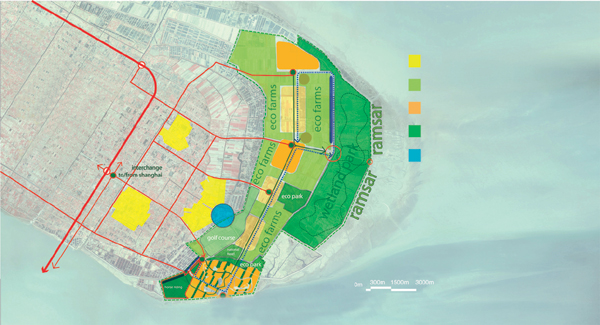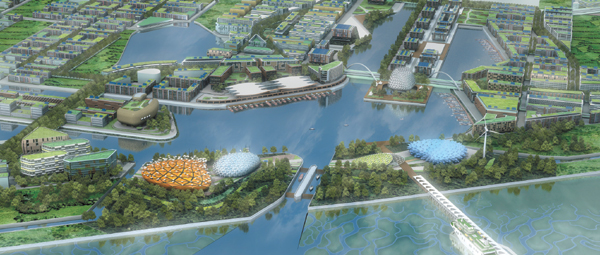Design for a Carbon-Free Life: The Pursuit of
Ramping Up the Scale
Arup is now working with the city of London to plan and develop Gallions Park, a 200-unit zero-carbon housing development. The firm is also providing a range of services, including urban design, sustainable energy management, and infrastructure planning for China's Dongtan Eco-City. Situated at the mouth of the Yangtze River, just north of Shanghai, it will produce its own energy from wind and solar power, biofuel, and recycled waste. The 33-square-mile site will be a city of three villages, with a demonstration phase for up to 10,000 people slated for completion in 2010.
? Efforts to create a carbon-neutral built environment at an urban or neighborhood scale are not limited to Europe and China. For example, the Los Angeles Community College District (LACCD) has adopted a plan to take all of its nine campuses, comprising 5 million square feet, off the grid by 2010. One current LACCD project is the design of a 1.2 mW PV system for its East Los Angeles College campus in Monterey Park, expected to generate enough power to meet daytime energy needs. ÂÂ
|
Â
At the level of individual buildings in the U.S., low-energy facilities are proliferating. The Department of Energy has broken ground for a 210,000-square-foot research support facility on its NREL campus in Golden, Colorado. Expected to achieve a LEED Platinum rating, the building will serve as a proving ground for the latest renewable energy and energy-efficiency technologies in areas such as daylighting, energy recovery, mechanical systems, and photovoltaics. The NREL campus already has one LEED Platinum building-the 71,000-square-foot Science and Technology Facility (S&TF) designed by the Phoenix office of SmithGroup. Energy costs for operating the S&TF are projected to be 41 percent lower than those of a comparable facility. And across the country, in New York City, the 2-million-square-foot headquarters for the Bank of America is expected to be the first LEED Platinum-certified skyscraper once construction is completed in 2008.
Â
Lewis Center |
Such features as an efficient building envelope, passive and active solar strategies, and a Living Machine con-tribute to sus-tainable measures at the Adam Joseph Lewis Center at Oberlin College.  |
In 2005, Oberlin installed a 100 kW PV array over a parking lot adjacent to the Lewis Center. Together with the original 59 kW array on the center's rooftop, the PVs generate enough power to satisfy all of the building's power demand and a 20 to 30 percent surplus. |
Â
Â
Many more ambitious projects are planned throughout the country. However, due to relatively low-energy costs, zero-energy design remains on the fringe even in the sustainable design world. In February, the USGBC and Architecture 2030 hosted the 2010 Imperative, a global "teach-in" web-cast that sought to raise awareness of the need to reduce the carbon footprint of new and existing buildings. At the event, Chris Luebkeman, the director of Arup's global foresight and innovation initiative, spoke about the firm's work at Dongtan, summing up many of the difficulties of achieving the goals of 2030. "Green design is not more expensive," Luebkeman said. "It's just more challenging."










